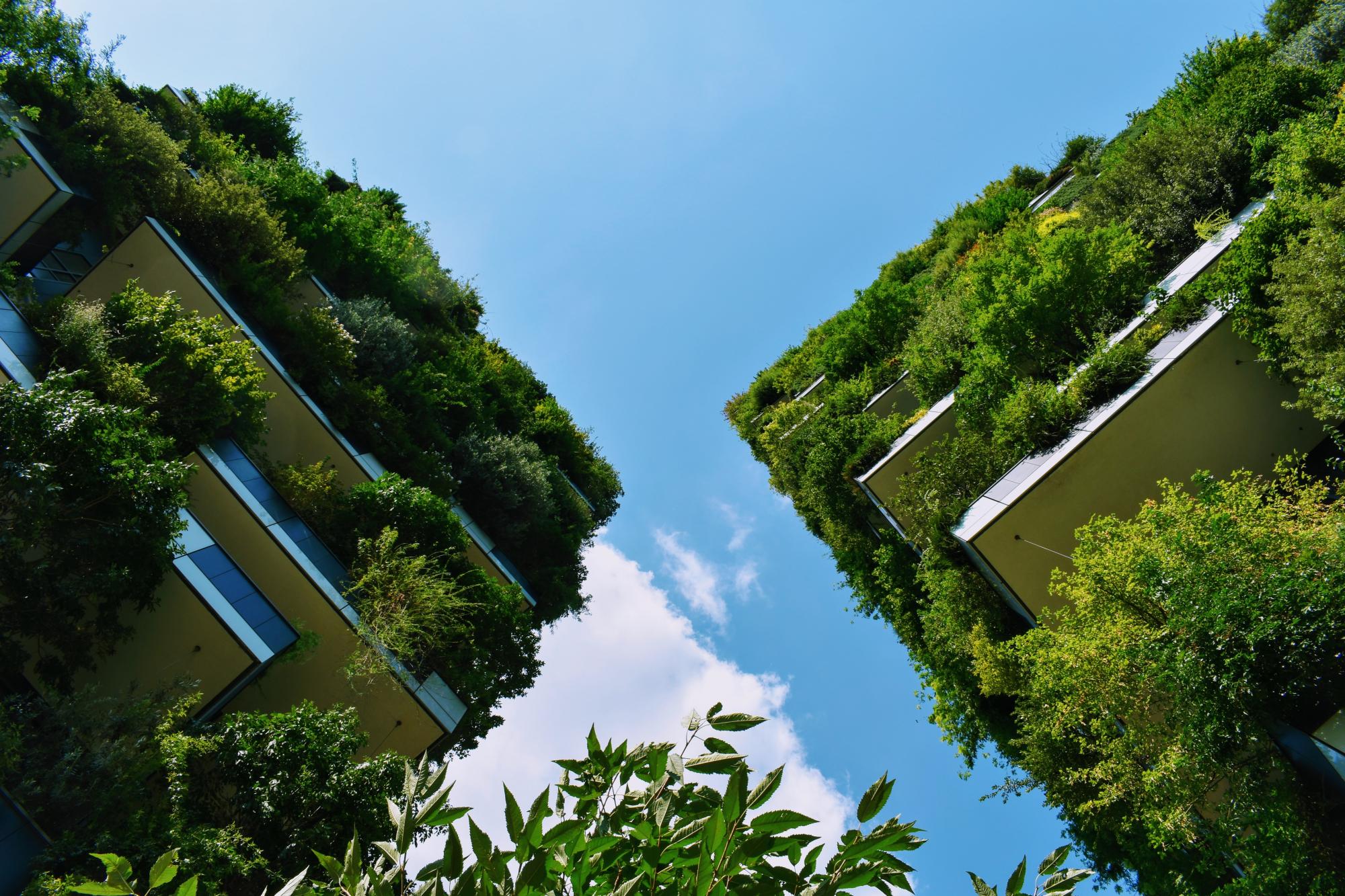Last updated: October 2021
The data centre for Citi Bank in Frankfurt is the first in the world to put sustainability at its heart, setting radical new standards in an industry at the forefront of the fight against global carbon emissions (1). The functional and aesthetic aspects, as well as their CO2 balance and later reusability, played a decisive role in the selection of all materials. Disguising the full volume of the data hall, the iconic green wall features indigenous plants and is fully irrigated by harvested rainwater. The wall, measuring some 55 m by 12 m high, complements the extensive green roof and helps maintain a constant building temperature throughout the year while reducing thermal gain in the summer months. (1)
Overview
Nature-based solution
- Nature on buildings (external)
- Green walls or facades
Key challenges
- Climate action for adaptation, resilience and mitigation (SDG 13)
- Climate change adaptation
- Green space, habitats and biodiversity (SDG 15)
- Green space creation and/or management
- Environmental quality
- Air quality improvement
- Health and well-being (SDG 3)
- Improving mental health
- Sustainable consumption and production (SDG 12)
- Sustainable consumption
Focus
Creation of new green areas
Project objectives
1. Increase the aesthetic appearance of the data center (1);
2. Increase the comfort of the data center employees (1);
3. Contribute to maintaining a constant building temperature throughout the year (1);
4. Prevent the thermal gain in the summer months (1);
5. Reduce the visual impact of the building to its surroundings (2).
Implementation activities
1. Installation of a green wall of 55m long and 12m high (1, 2);
2. Using harvested rainwater for the irrigation of the green wall (1).
Climate-focused activities
Climate change adaptation:
- Implement green walls or roofs to lower indoor temperature and provide insulation
Main beneficiaries
- Private sector/Corporate/Company
- Citizens or community groups
Governance
Management set-up
- Led by non-government actors
Type of initiating organisation
- Private sector/corporate actor/company
- Transnational network
Participatory approaches/ community involvement
- Unknown
Details on the roles of the organisations involved in the project
The Client, Citigroup company that manages the operation of the data center. Architecture & Engineering was commissioned to Arup Associates - a transnational architecture and engineering company (1)
Project Team (4):
Project Management:
Citi Realty Services assisted by Drees & Sommer GmbH
Technology Services: Citi Technology Infrastructure
Architecture/ Mechanical & Electrical Engineering Services: Arup Associates
Main Contractor: BAM Deutschland AG/Imtech Deutschland GmbH & Co.KG
Project implemented in response to ...
... an EU policy or strategy?
Unknown
( )
... a national policy or strategy?
Unknown
... a local policy or strategy?
Unknown
Financing
Total cost
€10,000 - €50,000
Source(s) of funding
- Corporate investment
Type of funding
- Direct funding (grants, subsidies, or self-financed projects by private entities)
Non-financial contribution
No
Impacts and Monitoring
Environmental impacts
- Climate change
- Lowered local temperature
- Reduced emissions
- Enhanced carbon sequestration
- Environmental quality
- Improved air quality
- Green space and habitat
- Increased green space area
Economic impacts
- Unknown
Socio-cultural impacts
- Health and wellbeing
- Improved mental health
Type of reported impacts
Expected impacts, Achieved impacts
Presence of formal monitoring system
Yes
Presence of indicators used in reporting
Yes
Presence of monitoring/ evaluation reports
Yes
Availability of a web-based monitoring tool
No
References
1. Citi Data Centre : ARUP ASSOCIATES. (2008). Accessed Accessed on September 26 2020, Source link
2. Arup’s Low Energy Citi Data Centre Building. (2009). Accessed on September 26 2020, Source link
3. Stadt Frankfurt Am Main. (2017). Masterplan 100% Klimaschutz: Stadt Frankfurt Am Main | Dezernat Umwelt Und Gesundheit | Umweltamt. Accessed on September 26 2020, Source link
4. Citi. (2009). Citi Achieves First Ever LEED Platinum Accreditation for a Data Center. Accessed on September 26 2020, Source link
5. Arup. (2013). Thoughts | Bring Data Centres in from the Cold. Website not available September 2020
6. Heise Online (2008). Citigroup eröffnet "grünes" Rechenzentrum, Accessed on September 26 2020, Source link
2. Arup’s Low Energy Citi Data Centre Building. (2009). Accessed on September 26 2020, Source link
3. Stadt Frankfurt Am Main. (2017). Masterplan 100% Klimaschutz: Stadt Frankfurt Am Main | Dezernat Umwelt Und Gesundheit | Umweltamt. Accessed on September 26 2020, Source link
4. Citi. (2009). Citi Achieves First Ever LEED Platinum Accreditation for a Data Center. Accessed on September 26 2020, Source link
5. Arup. (2013). Thoughts | Bring Data Centres in from the Cold. Website not available September 2020
6. Heise Online (2008). Citigroup eröffnet "grünes" Rechenzentrum, Accessed on September 26 2020, Source link

